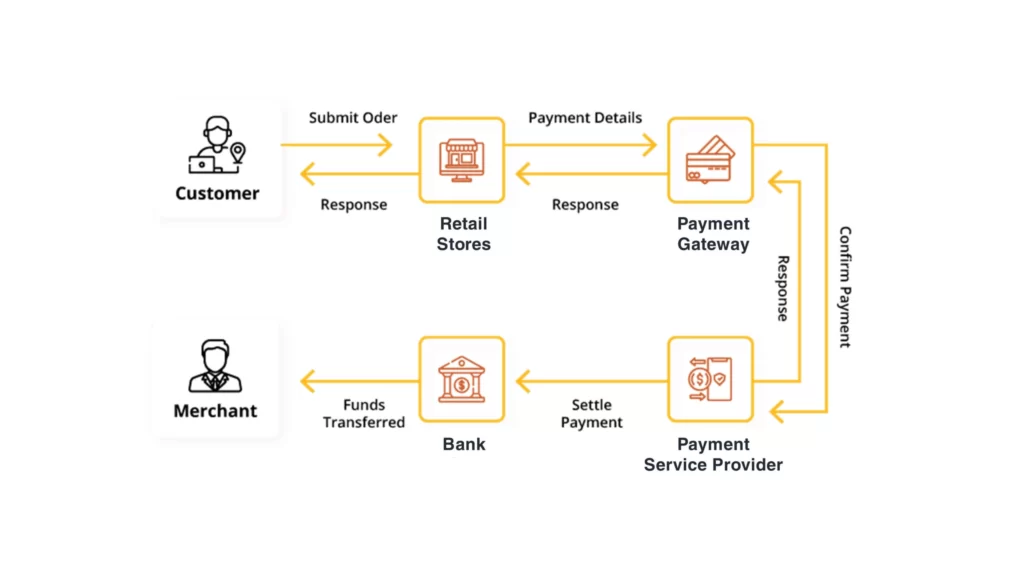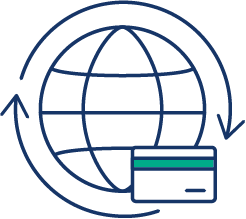
Differences between a PSP and a Gateway
- Education
-
May 06
- Share post

What is a Payment Service Provider?
Payment Service Provider, also known as PSP, Payment Solution Provider or Merchant Services Provider, is a financial entity that is authorized to process transactions between buyers and merchants.
Payment Provider a fast and cost-effective way to accept payments without needing to create your own merchant account and open a company in another country. In a way, a Payment Service Provider, acts as a middleman between a merchant, acquiring banks and card networks involved in the transaction. All you have to do is to sign up with a third-party payment provider, and you can start accepting payments right away.
The scope of PCI DSS is also get reduced when using PSP. With PSP, sensitive data is sent directly from the payer’s browser to the Payment Provider, without actually running through ‘merchants’ servers. PSP usually assumes responsibility for the payments, relieving the merchants of transactional security risks.
Not only does PSP offer reliable payment processing, but it can also help you improve your customers’ payment experience. A PSP can connect you with payment processors from all over the world so you can start accepting the right local payments to the region that you are expanding.
What is a Payment Gateway?
A payment gateway is a mechanism behind credit card transactions between a merchant and their customers. In other words, is what assures security and facility sending credit card information from the merchant’s website to the payment processor, and returning transactions details and its response back to the customer.
Within a few seconds, the payment gateway will be responsible for encryption, request, fulfillment, calculating tax costs, screening orders, and using geolocation to provide a better experience to the customer. To simplify: think of it as a “cash register” in an electronic transaction.
What is the Difference Between a Payment Service Provider and a Payment Gateway?
Even though Payment Service Providers and payment gateways are both essential links in the card processing chain, they are completely different things.
In the simplest terms, a payment gateway is a mechanism behind credit card transactions between a merchant and its customers. In other words, it is what assures security and facility sending credit card information from the merchant’s website to the payment processor. When the payment information is entered, the payment gateway then connects to the PSP to get the transaction processed.
Payment Service Provider, on the other hand, is a financial institution that facilitates the transaction. It connects merchants to the credit card networks directly or with payment processors in order to process the payment.
How do Payment Service Providers Work?
Let’s take a closer look at how do Payment Service Providers fit into credit card Processing.
The key players involved in online transactions are:

Cardholder
A payee who obtains a card from a card Issuing Bank. The card is provided by an Issuing Bank that works in partnership with Card Networks.

The Card Networks
Credit card networks that facilitate a payment authorization and fund transfers between sellers, customers and their banks.

Merchant
A business that sells products or services. In order to accept credit card payments, merchants use Payment Providers.

Payment Service Providers
Will contact Card Networks and other financial institutions involved in the transaction on merchant's behalf. The PSP will also arrange for the funds to be placed into the merchant's account after the transaction is being processed.
How the credit card transaction processing works?
STEP 1 – The customer purchases the goods or services from a merchant and pays with his/her card.
STEP 2 – The point-of-sale merchant system or gateway software sends the payment information to the Payment Service Providers.
STEP 3 – The Payment Service Provider detects the appropriate credit card network and connects to it on the merchant’s behalf.
STEP 4 – Card network determines the Issuer and reports the transaction to them.
STEP 5 – The Issuing bank checks the legitimacy of the transaction and responds to the network with an approval or denial code.
STEP 6 – The network gets back to the PSP with approval/denial information.
STEP 7 – The payment processor transfers the approval/denial message to the merchant, and the Payments processor (aka Payment Service Providers) then displays the message.
STEP 8 – The funds are being transferred to the merchant’s account.
Even though payment processing sounds like a very elaborate and time-consuming operation, the entire transaction approval process takes mere seconds. This is how advanced modern payment systems are.
How to Choose the Best Payment Service Provider?
Payment Service Providers are hands down one of the most important links in the chain of online payments. With hundreds of PSP providers to choose from, how do you pick the one that’s best for your business?
Here are the key considerations when choosing the best payment provider:
PCI Compliance
When deciding between several Payment Service Providers, always go with the one that is PCI compliant. It will help to reduce your PCI compliance scope and save you a lot of time and money.
Software Compatibility
Software compatibility is another important consideration when selecting a Payment Service Provider. That said, try going with the service that is compatible with the CRM system and other software that you already have in place. This will enable smoother operation and enhanced payment experience.
Fraud Protection
When choosing your Payment Processor, seek out one that has placed high importance on security and fraud prevention. Strong PSP will have tools in place that will help to combat the fraud and identify the fraudulent transaction before the request has even been transferred to a credit card company.
Here you have it, Payment Service Providers Explained. Choosing the right PSP can mean the difference between a successful transaction and a failed one. We hope we have armed you with enough information to find a service that is both reliable and is aligned with your business objectives!
